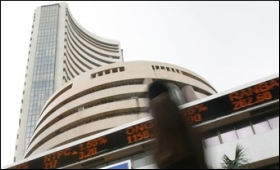|
|
|

|
Most sectors in Indian stock market trading at premium to historical averages
|
|

|
|
| Top Stories |
 |
|
|
|
SME Times News Bureau | 07 Apr, 2021
As the Indian stock market went on an unprecedented bull run amid the
pandemic, around two-third of the sectors are currently trading at a
premium to their historical averages, showed a report by Motilal Oswal
Financial Services.
After the sharp rebound, the Nifty now trades
at a 12-month forward P/E (price-to-earning ratio) of 20.7x, 10 per
cent above its historical average of 18.8x, said the Bear & Bulls
report.
Health care and auto now trade in a reasonable range to
their long period average (LPA) valuations, while technology, after the
sharp run, trades at a 40 per cent premium to its LPA. Consumer goods
still trade at a decent premium to its LPA, but this premium has shrunk
in the last one-year.
"Private Financials are trading at a
premium to its LPA on a P/B basis. Oil and Gas is trading at 14.1x, at a
17 per cent premium owning to RIL. Excluding RIL, Oil and Gas P/E will
be at 8.3x, a discount of 20 per cent to its LPA," it said.
Further, the market capitalisation-to-GDP ratio is at a new year-end high of 106 per cent.
Noting
that all sectors delivered positive returns in FY21, the Motilal Oswal
report said that the top gainers in the sectoral space were metals (up
151 per cent), autos (108 per cent), technology (103 per cent),
capitalgGoods (+92 per cent), and real estate (90 per ecnt), while
consumer goods underperformed.
The theme of FY21 was high beta,
cyclicals, and value. Quality and defensive themes, the flavor of the
past few years, took a breather. The breadth was positive in FY21, with
49 Nifty stocks closing higher, it said.
|
|
|
| |
|
|
|
|
|
|
|
|
|
|
|
|
|
|
| |
| Customs Exchange Rates |
| Currency |
Import |
Export |
US Dollar
|
₹88.70
|
₹87 |
UK Pound
|
₹119.90
|
₹116 |
Euro
|
₹104.25
|
₹100.65 |
| Japanese
Yen |
₹59.20 |
₹57.30 |
| As on 30 Oct, 2025 |
|
|
| Daily Poll |
 |
 |
| Who do you think will benefit more from the India - UK FTA in the long run?
|
|
|
|
|
|
| Commented Stories |
 |
|
|
|
|
|
| |
|